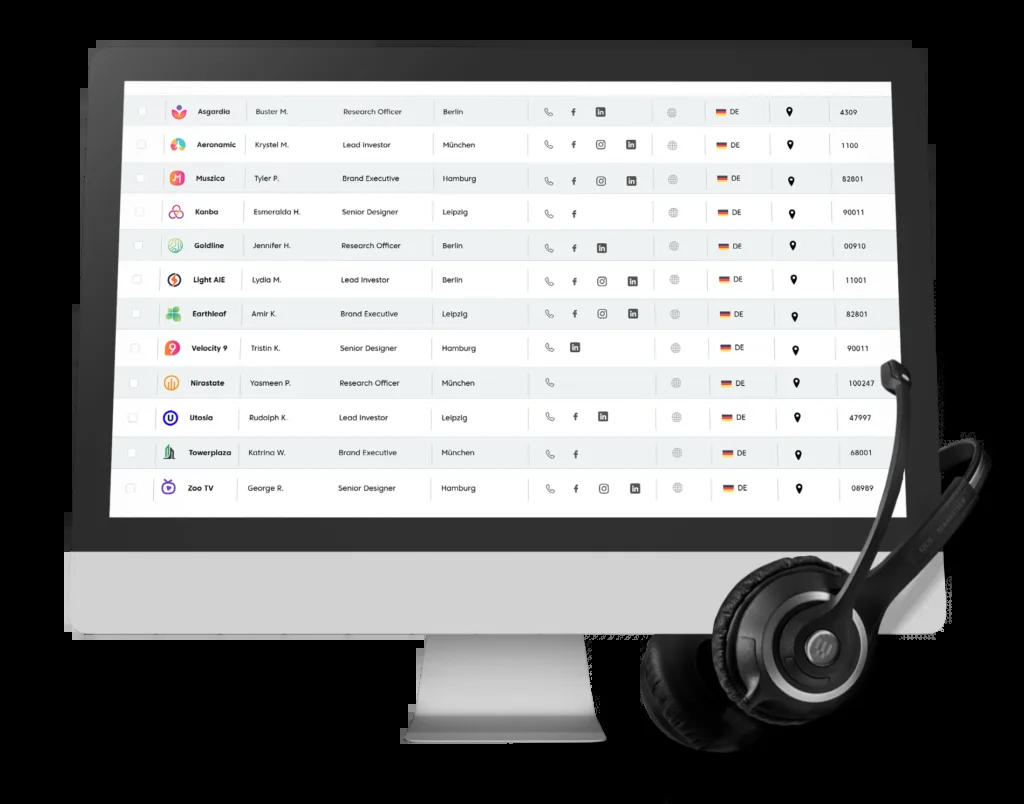In the fast-paced world of sales and marketing, one of the most significant decisions businesses face is how to acquire new leads. The two primary approaches are buying leads and generating them. But which is the best strategy for your business? Let’s break down these two methods and explore the pros and cons to help you determine which path will deliver the best results for your unique situation.
What Does "Buying Leads" Mean?
Buying leads is the process of purchasing contact information—such as email addresses, phone numbers, or business profiles—from third-party vendors. These vendors collect and organize data from various sources, like social media, web forms, surveys, or public databases. They then sell these leads to businesses that are looking for fresh prospects to target.
For many businesses, this seems like a quick fix to jumpstart their sales process. It offers immediate access to a wide range of potential customers without the need for extensive effort in lead generation. But is it really as simple as it sounds?
The Pros of Buying Leads
- Quick Results: Buying leads is a fast way to fill your sales pipeline. As soon as you purchase the list, you can start reaching out to prospects right away. If you need to ramp up your sales efforts in a hurry, buying leads can be an attractive option.
- Wide Reach: With purchased leads, you gain access to a broad range of potential customers from various industries, locations, and demographics. If your business operates in multiple areas or targets a large audience, buying leads can help you cast a wide net.
- Less Effort: Lead generation can be time-consuming. When you buy leads, you skip the steps of researching and nurturing potential customers. This can be especially appealing for businesses that are strapped for time or lack the resources to focus on long-term lead-generation strategies.
The Cons of Buying Leads
- Quality Concerns: One of the biggest drawbacks of buying leads is that the quality can vary greatly. Not all leads are equal—some may be outdated, inaccurate, or irrelevant to your business. If the leads are poorly targeted, you could end up wasting time and resources on unqualified prospects.
- Lack of Personalization: Since you didn’t cultivate these leads, it’s harder to tailor your messaging to their specific needs. Generic outreach can lead to low response rates and might make your brand seem impersonal or out of touch.
- Legal and Ethical Risks: Buying leads can come with legal risks. If the vendor hasn’t complied with data protection laws like GDPR or CAN-SPAM, you could face fines or damage to your reputation. Additionally, unsolicited outreach can lead to high opt-out rates or complaints.
- One-Time Use: Once you buy a list, it’s a one-off transaction. The leads you’ve purchased don’t offer long-term benefits. Once you’ve contacted them, they’re unlikely to stay engaged with your brand for long unless you continue buying fresh lists.
What Does "Generating Leads" Mean?
On the flip side, generating leads refers to the process of actively attracting and nurturing potential customers through various methods like content marketing, social media engagement, email campaigns, webinars, and more. It’s a proactive, ongoing effort to draw in prospects who have shown interest in your product or service.
Generating leads takes time and requires a strategic approach, but it offers several long-term benefits. So, is it worth the investment? Let’s take a closer look.
The Pros of Generating Leads
- Higher Quality Leads: Lead generation focuses on attracting prospects who are actively interested in what you offer. Through targeted content or campaigns, you can create highly relevant touchpoints that resonate with your audience. This often results in better-qualified leads that are more likely to convert.
- Brand Trust and Authority: Consistent lead generation builds trust with your audience. By offering valuable content or solutions to their problems, you position your brand as a thought leader in your industry. This can lead to stronger relationships and more loyal customers.
- Long-Term Results: While generating leads takes more time initially, the benefits are long-lasting. As you nurture relationships with your leads, you can turn them into customers leadgenerierung keep them coming back for repeat business. Over time, you’ll build a database of highly engaged prospects that continues to generate value for your business.
- Personalized Outreach: When you generate your own leads, you have the opportunity to tailor your messaging to the specific needs and desires of your audience. This makes your outreach more personal and relevant, improving your chances of converting leads into customers.
The Cons of Generating Leads
- Time and Resource Intensive: Lead generation requires ongoing effort and investment. Whether you're creating content, running ad campaigns, or managing social media, the process can take significant time and resources. This can be a challenge for small businesses or those with limited marketing budgets.
- Delayed Results: Unlike buying leads, lead generation isn’t a quick fix. It can take weeks or even months to see meaningful results, depending on your strategy. This delay can be frustrating for businesses that need immediate sales.
- Requires Expertise: Successful lead generation requires a deep understanding of your target market, content strategy, SEO, and marketing automation tools. Without the right knowledge and expertise, the process can be inefficient and yield poor results.
Which Approach Works Best?
The answer depends on your business goals, resources, and timeline. If you’re looking for a quick influx of leads and have the budget to invest, buying leads can provide an immediate boost. However, the results may not be sustainable, and the quality of the leads can vary.
On the other hand, if you’re focused on building long-term relationships and nurturing a quality customer base, generating leads is the more strategic approach. While it requires patience, the leads you generate will be more likely to convert and provide a higher return on investment over time.
A Balanced Approach
For many businesses, the most effective strategy is a combination of both methods. Buying leads can fill your pipeline while you work on building and nurturing a long-term lead-generation strategy. This hybrid approach allows you to keep your sales process moving while investing in future growth.
Conclusion
When it comes to buying leads versus generating them, there’s no one-size-fits-all answer. Both strategies have their advantages and challenges. By evaluating your business’s specific needs, resources, and objectives, you can determine which approach will work best for you. Whether you buy or generate, the key to success lies in the ability to connect with your audience in meaningful, authentic ways—because ultimately, it’s not just about getting leads; it’s about turning those leads into loyal, satisfied customers.



